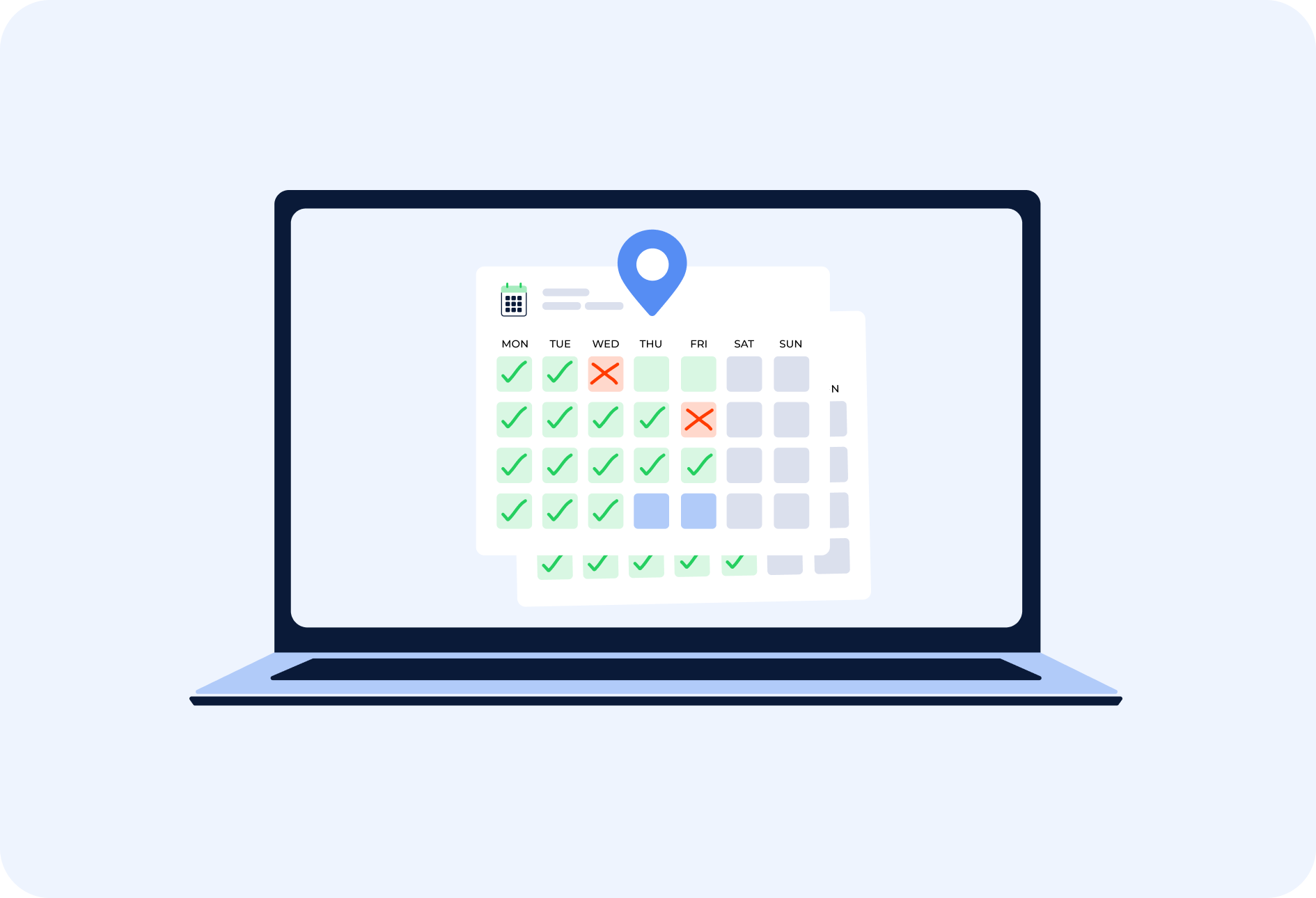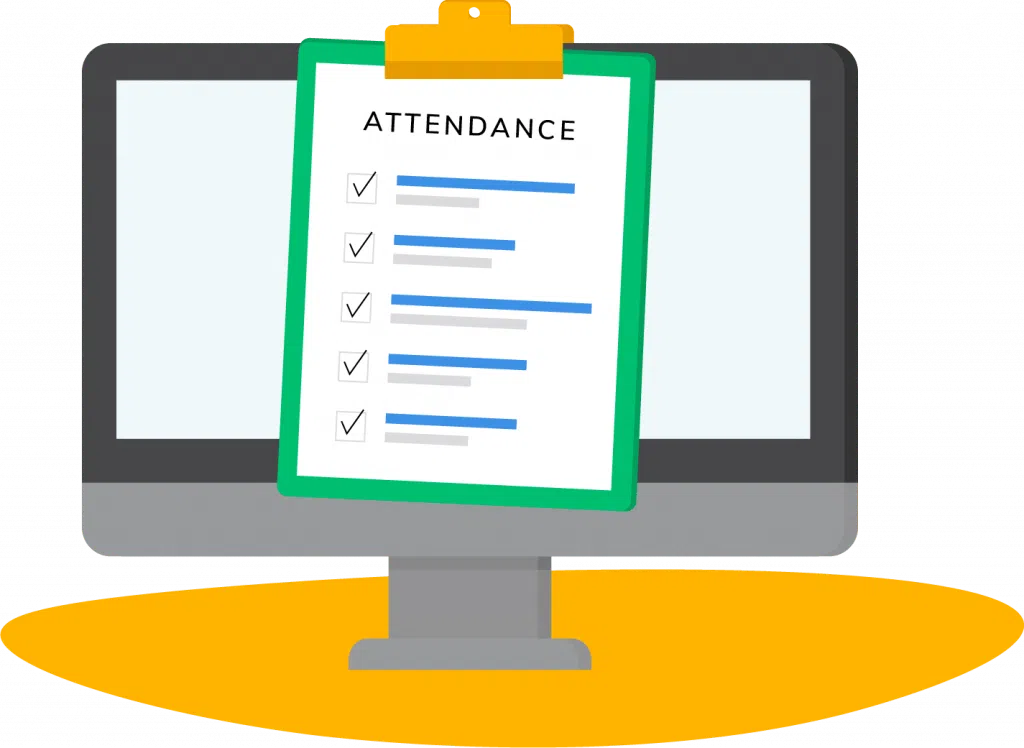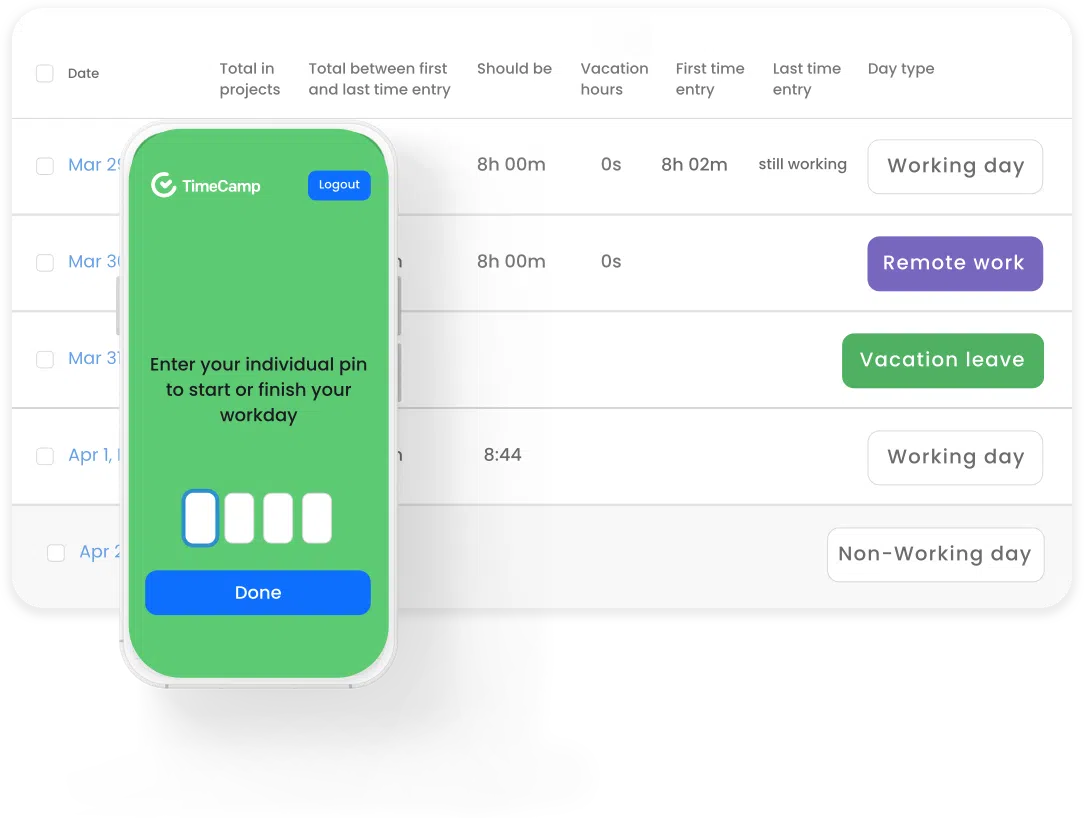Attendance Management in 2025: Best Practices!
-
Ola Rybacka
- October 3, 2023
- 8 min read

This article was last updated on December 6, 2024.
The attendance management process isn’t a piece of cake, no matter the size of the company. We all know how much time and effort it usually takes for managers (and employees) to fill the Excel documents manually. We often gave up doing it just because looking for the mistakes was more tiring than creating the sheets anew… But the dog days of spreadsheets are over; now SaaS is the king!
The market is full of various attendance management software that streamlines the tedious processes at work. But first, let’s recall some attendance-related essentials for the newbies and find out how the attendance management system work.
What is attendance management?
The process of tracking employees’ absence types of work days to minimize the company’s loss caused by lack of human resources. It helps the businesses stay up to date with employees’ performance and engagement.
No doubt attendance management is a must-have for business. Especially because employers are required by law to track employees’ absences. Luckily, now there’s no need to do it manually and produce piles of paper. Modern times require modern solutions, like a biometric attendance management system, or, less invasive, an employee attendance management system for desktop and mobile devices.

The purpose and benefits of attendance management in 2025
Attendance management is a must-have in modern organizations. There are many reasons why, but let me introduce you to the most important ones, especially if you’re not convinced your business really needs them.
✅ A legal issue
First of all, attendance tracking is required by both international and European law. The employer must keep an hourly record of their employees regardless of the workday they have. Depending on the country, they are also obliged to keep these records for a certain amount of time (for example., Poland, it’s 3 years since the reference period has ended). The same goes for overtime.
🛎️ Hint: before implementing the attendance process (like here), carefully check the current attendance policy and compliance with the law in your country.
✅ Eases the payroll process
Also, tracking employee’s time attendance is essential when it comes to salary calculation. It’s important, especially in the case of those who are employed on an hourly basis. Imagine guessing how much a certain employee should’ve been paid without their hours’ records – it’s almost impossible. The entire process is even easier when the organizations decide to automate it and use attendance management systems. They can also be sure their attendance data is safely stored in the cloud as long as necessary.
✅ An eye on employees’ performance
Attendance management also allows managers to find out how the members of their teams actually perform. Keeping track of work hours helps compare the records with work results and measure their productivity. Of course, we should remember it’s not for spying purposes! It’s all about improving employee productivity. Checking attendance records just helps point out the unproductive activities and make the changes if needed.
✅ Saving time
If you use an attendance management system that works automatically, the system will seamlessly capture attendance for each day when your employees clock in (turn the computer on and, for example. start the app). Once the desktop app or web timer is on, time entries appear in the timesheet. It not just helps keep track of employee time and time off, but also saves much time on filling the time cards manually.
✅ Attendance management and overtime
A typical workweek is 40 hours, 8 hours per day unless otherwise stated. Each hour above these is overtime that should be billed at a different rate. Keeping an accurate attendance tracking, especially when based on employee time tracking records, allows to indicate them and bill the employees as they deserve it.
✅ Attendance vs. time billing
There are two major ways of employee billing: fixed or flexible. The first assumes a specified amount of money per certain time period, e.g., 3000$ per month. It’s effective, especially for those types of professions that perform similar duties during working hours, e.g., office workers. When it comes to the second one, employees are paid based on how many hours they worked during a certain period based on a previously determined hourly rate.
Attendance management helps streamline the process, especially when managers use real-time tracking software records. These tools measure time spent at work accurately and assign the time entries to particular projects, so you can also see clearly how many hours it took for an employee to work for a particular assignment (e.g., customer).
But it’s not only helpful for calculating hourly billed employees — time and attendance management system track fixed-rate employees’ absence. An organization can easily accept and track employees’ leaves, holidays, and remote work requests using it. As we know, some workday types require different billing rates, so it’s a huge help for managers who don’t have to calculate the salaries manually.
The effects of poor attendance management
An inappropriate approach to time and attendance management leads straight to the bad practices applied by the employees (discover the full story here). Such behavior gets the organization in trouble which can cost it a lot.
Poor attendance management at the company is caused most often by the lack of conversation between the employer and their employees. The leaders often don’t need the urge to explain to their subordinates the company’s essentials, except the basic ones like terms and conditions. That’s why they often don’t understand why maintaining proper workplace attendance is essential for ensuring a company’s success.
One of the effects of poor attendance management is buddy punching. To put it simply, it’s the situation when a co-worker punches another’s time card for them. It was a common practice in paper time cards and in the companies that work on shifts. However, clocking in or adds precious hours for our payroll costs the employer a huge amount of money yearly.
🛎️ Establishing a zero-tolerance practice for buddy punching and explaining its negative effects is a must in the modern company.
Luckily, using the automatic clock-in clock-out system and time tracking software eases this pain effortlessly. In the end, it’s not that easy to log in to the coworkers’ computer and turn the time tracker on when they’re still on their way to the office. However, not every company needs a comprehensive time tracking suite – for those who need a simple clock-in/clock-out system, a time clock kiosk will be the perfect option. Every employee has their own PIN code and enters it using a shared device placed somewhere in their facility.
Here’s how does it look in TimeCamp:

What is more, make sure employees use passwords, especially strong and difficult to guess ones (check the examples). The more difficult it is, the harder it will be to input, especially in a high-stress situation like buddy punching. Additionally, do your best to make them understand that sharing their passwords is also harming their personal data.

How to keep time and attendance management in 2021?
Living in modern times requires smart solutions. The world goes full into technology, so the widely known clock in/out punching cards are mostly no longer in use. Companies no longer need to waste paper for tracking employees’ attendance as well.
If you want your organization to stay up to date with the recent innovations in attendance, be sure you implement at least one of these methods:
- Proximity Cards and badges with magnetic stripes that can be read without inserting them into the device (perfect in pandemic times because it’s entirely contactless),
- Time tracking software with the attendance module – not only monitors time the employees spend on projects but also helps track their absence,
- GPS and geofencing – especially for contractors or field workers who spend more time outside than in the office,
- Biometric Systems and Facial Recognition Systems – identifies the employee basing on their physical characteristics, most foolproof method of attendance management,
- Employee Self-Service – allows employees to make changes in their HR-related details and saves organizations lots of labor hours.
👉 Check also our article about time tracking for contractors
How does attendance management software work?
Attendance management systems were created to help organizations track both employees’ efficiency and their absence at work. They automate the tedious process of doing it manually and help companies go paperless (see, it’s not only effortless but also makes your organization eco-friendly!).
👉 Find out more about Employee Attendance Tracking Apps
Besides being an automatic clock in and time tracker, TimeCamp also serves organizations as an attendance management system. Thanks to its attendance module, users (and what’s most important managers) can see the following data for a particular user in a previously specified time period (e.g., for the particular week, month, or custom one):
- work hours per day during this timeframe,
- total work hours for this period,
- summary of the year,
- active computer usage hours,
- total time between computer turn on/off
- total effective time,
- total paid time,
- day type,
- number of used vacation hours for a specific year,
- summary of the year.
Various day types
It’s good to clearly see how employees are working and their attendance records in one place. Because most of the companies respect the types of workday mentioned below, we made sure you’ll be able to choose them from the drop-down menu in TimeCamp:
- normal working day,
- holiday,
- sick leave,
- business trip,
- absent,
- parental leave,
- vacation leave,
- remote work,
- special leave,
- free day.
Timesheet approvals
Another smart feature in an attendance management system. How does it work in TimeCamp? Once the employee sends their timesheets, they can be approved or rejected by their superiors. In case of rejection, managers can leave a note with an explanation of what should be changed to get approval. Making it fully automatic, there’s no need to produce more paperwork than we need to.
Leave management
Some of the attendance management systems allow the employee to save time and apply for leave automatically. Users can see their requests and approved leaves in the panel. Managers receive automated alerts when an employee asks for leave.
In TimeCamp, which is also an attendance management system, your employees can set a type of day in an employee attendance view. This kind of leave management system is perfect for further payroll issues because all the attendance data about the employees’ absence is in an easily accessible place.
Time and attendance management software and payroll
Tracking employee’s hours at work with an online time recording system gives an accurate answer on how much time an employee worked in a specific time period. Attendance records help pay the employee an appropriate salary, as high as they deserve.
Combining attendance management (working hours) with billing rates creates an easy-to-use payroll system within your time tracking software. In TimeCamp, in the employee attendance module, you can generate reports that show users’ working hours, efficiency, breaks, and day types. What is more, attendance management systems allow predefining hourly rates for each employee and for each type of workday. Altogether, you will be able to create an easy-to-use payroll structure inside the management system.
As you can see, the attendance management system is packed with many features that replace traditional, paper-based methods like spreadsheets or punching cards. Using them, helps your company set the modern approach and go paperless. Additionally, in combination with other features, it’s invaluable for calculating the salary.
Conclusion
Traditional punch cards or spreadsheets are an old hat. Online times require companies to set the modern approach to track employee productivity and absence. Using online attendance management systems saves the organization a lot of time that would be spent on tracking the employees’ presence and absence manually. It also helps calculate the salaries the employees deserve.
Using attendance management systems also helps to measure your employees’ overall productivity. The system needs basic attention from managers and saves them much time for what really matters at work. The outcome of attendance management system usage is remarkable – give it a try and see how it works for your company!
Thanks, BigMongolian for a high rate and recommendation! 🙌


